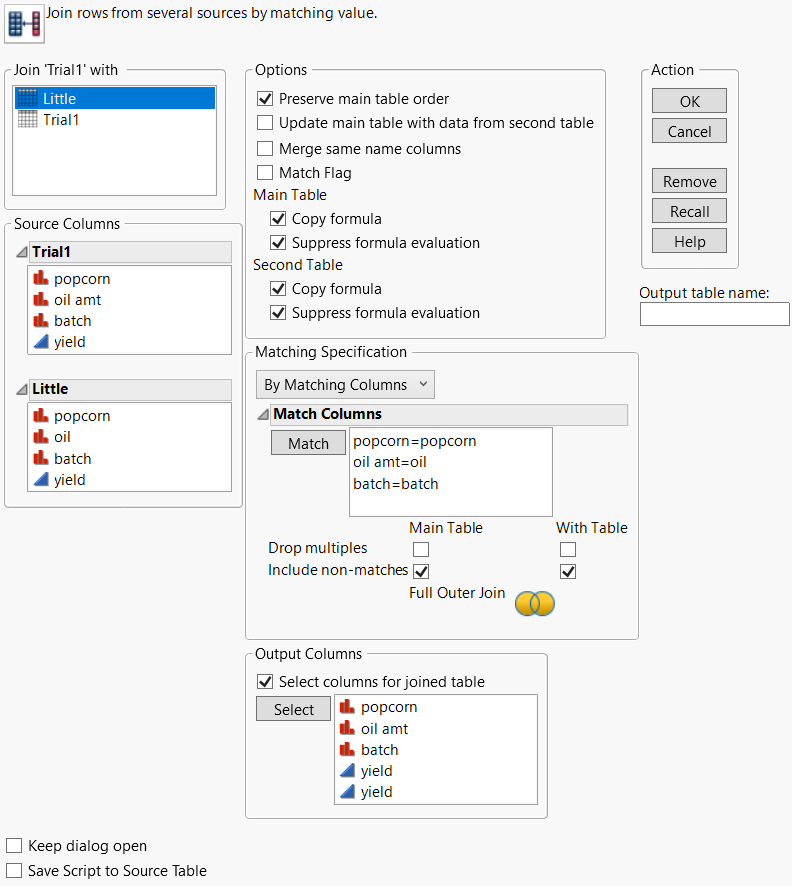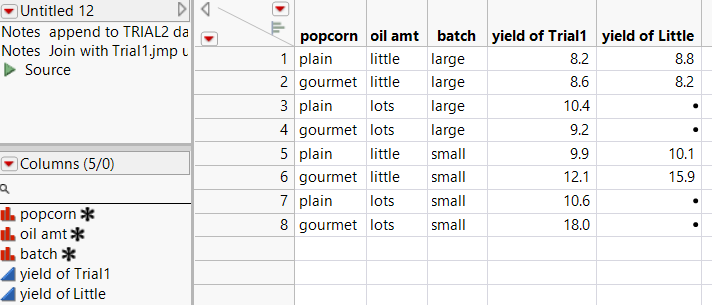Example of Joining Data Tables
Use the Join option to combine information from multiple data tables into a single data table. For example, suppose that you have a data table containing results from an experiment on popcorn yields. In another data table, you have the results of a second experiment on popcorn yields. To compare the two experiments or to analyze the trials using both sets of results, you need to have the data in the same table. Also, the experimental data was not entered into the data tables in the same order. One of the columns has a different name, and the second experiment is incomplete. This means that you cannot copy and paste from one table into another.
Example of Joining Two Data Tables
1. Select Help > Sample Data Library and open Trial1.jmp and Little.jmp.
2. Click Trial1.jmp to make it the active data table.
3. Select Tables > Join.
4. In the Join ‘Trial1’ With box, select Little.
5. From the Matching Specification menu, select By Matching Columns if it’s not already selected.
6. In the Source Columns boxes, select popcorn in both boxes, and then click Match.
7. In the same way, match batch to batch and oil amt to oil in both boxes.
Your matching columns do not have to have the same name.
8. Select Include non-matches for both tables.
Since one experiment is partial, you want to include all rows, including any with missing data.
9. To avoid duplicate columns, select the Select columns for joined table option.
10. From Trial1, select all four columns and click Select.
11. From Little, select only yield and click Select.
Figure 3.27 Completed Join Window
12. Click OK.
Figure 3.28 Joined Table

